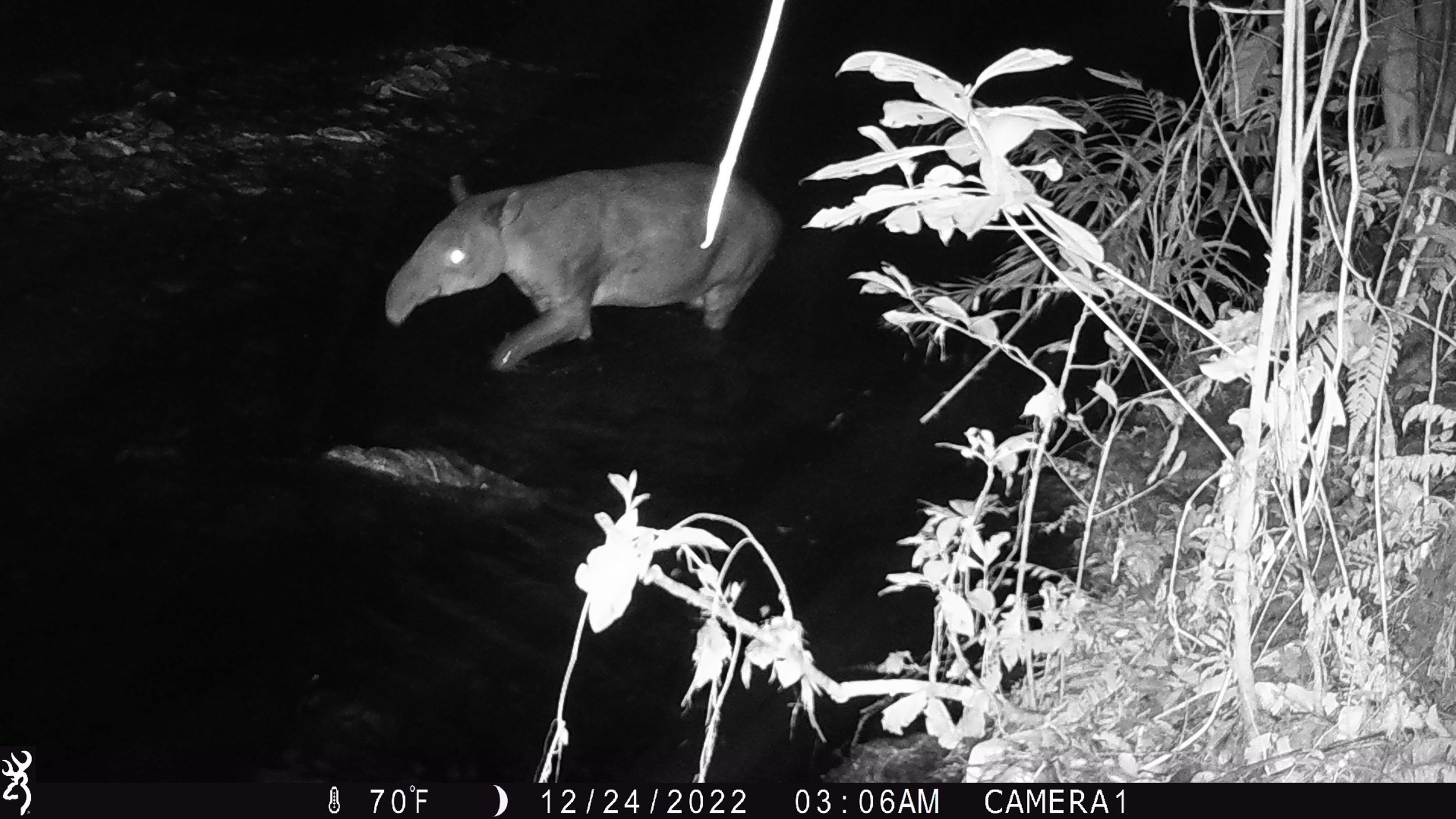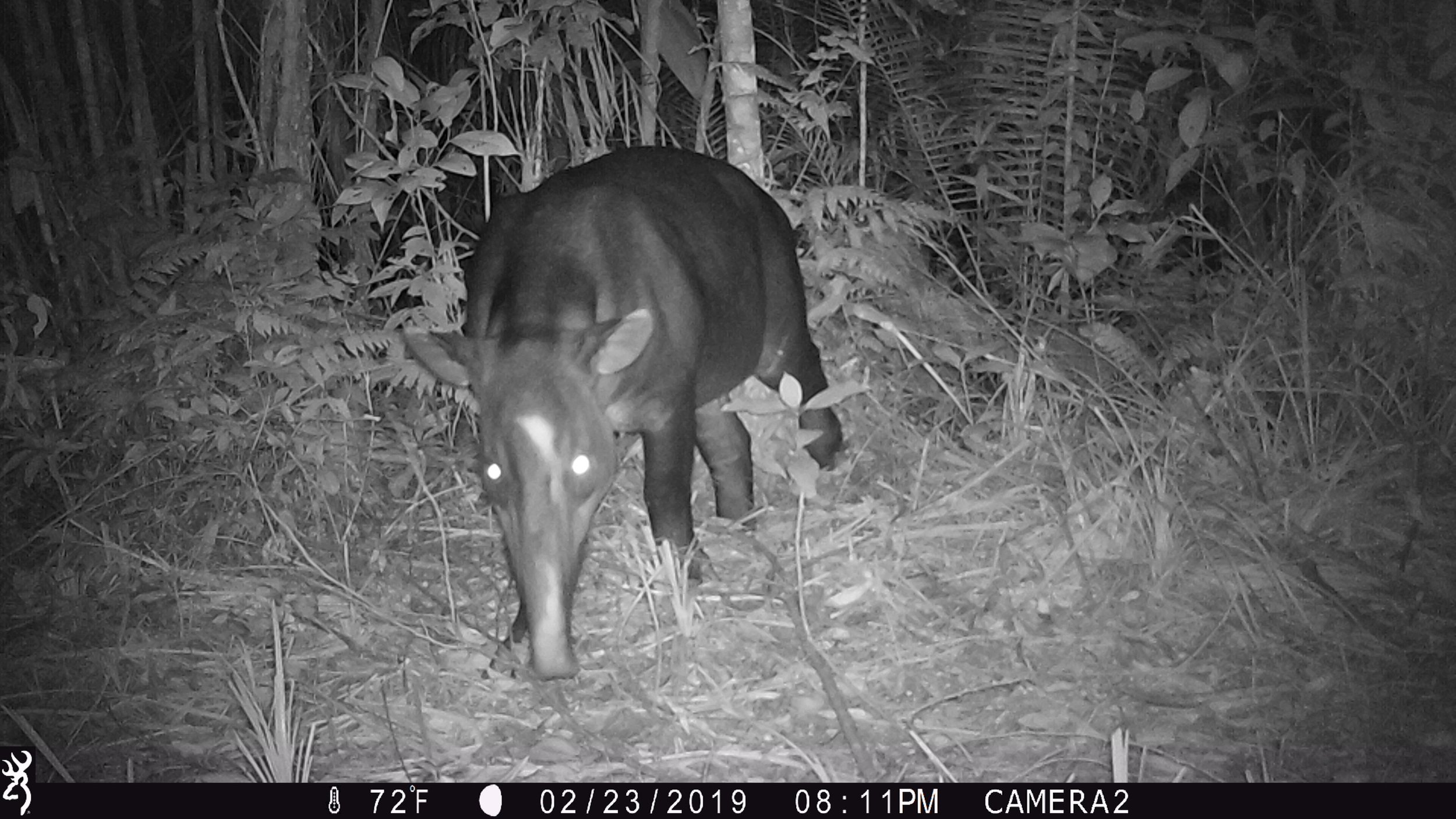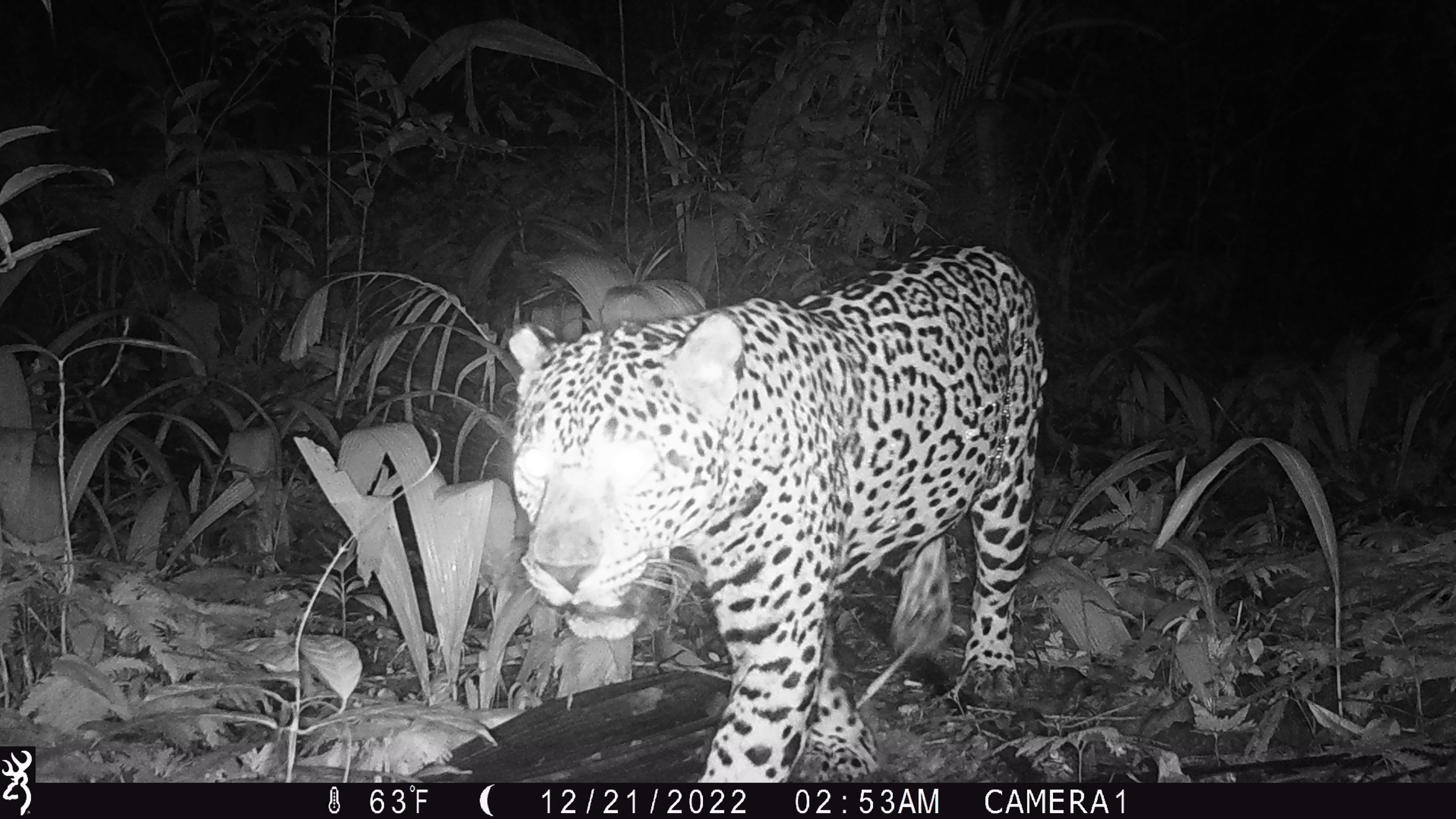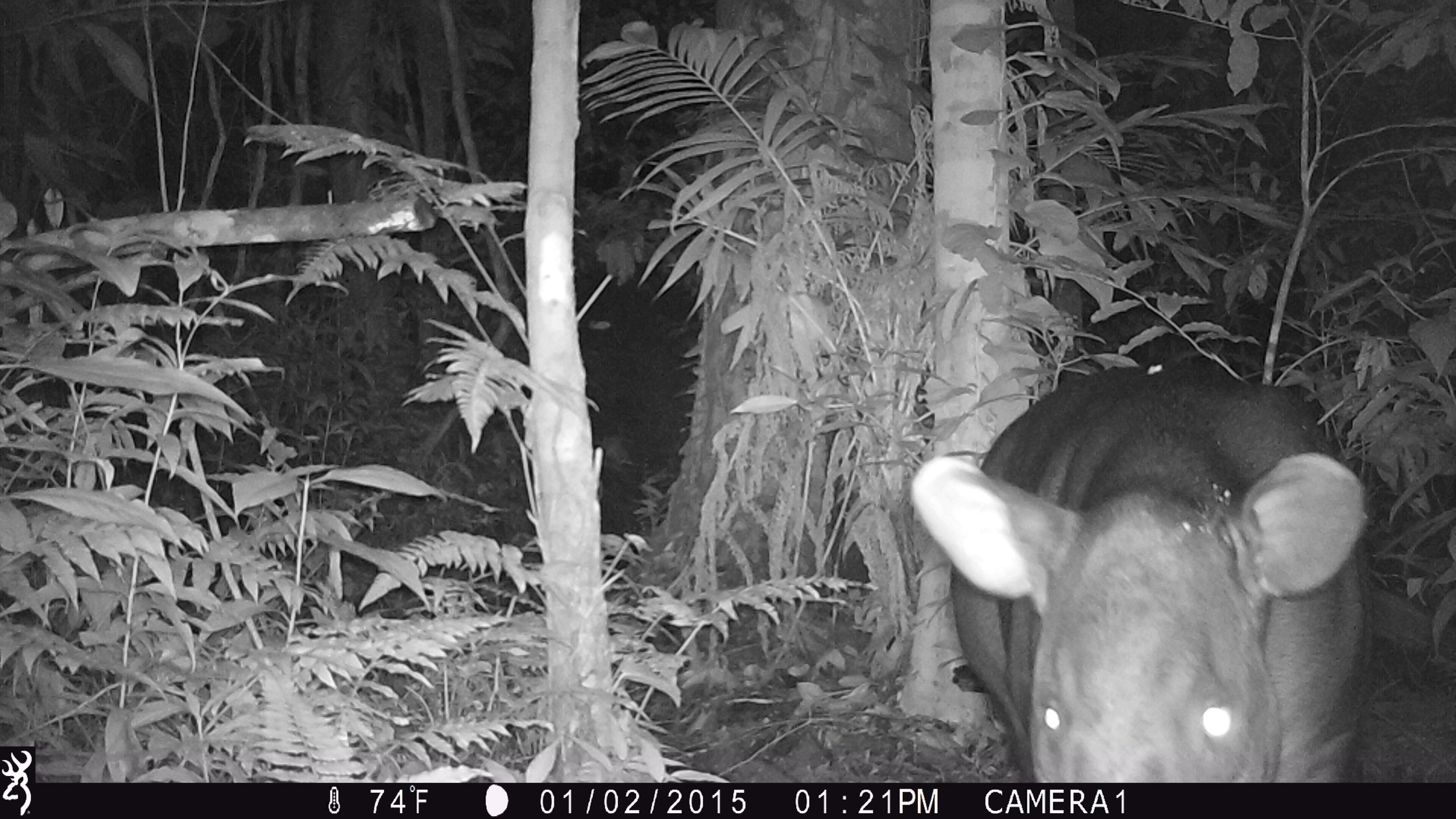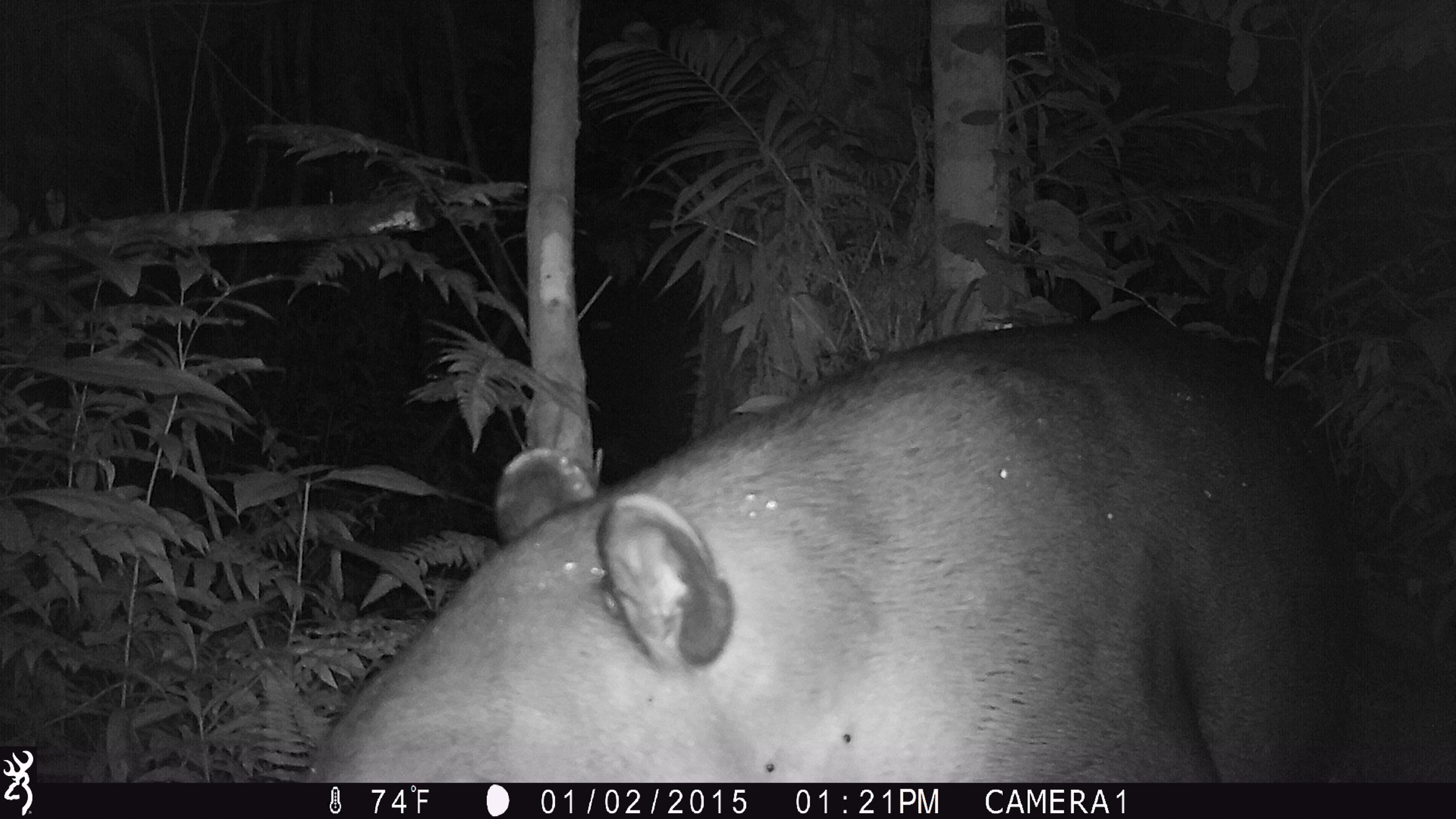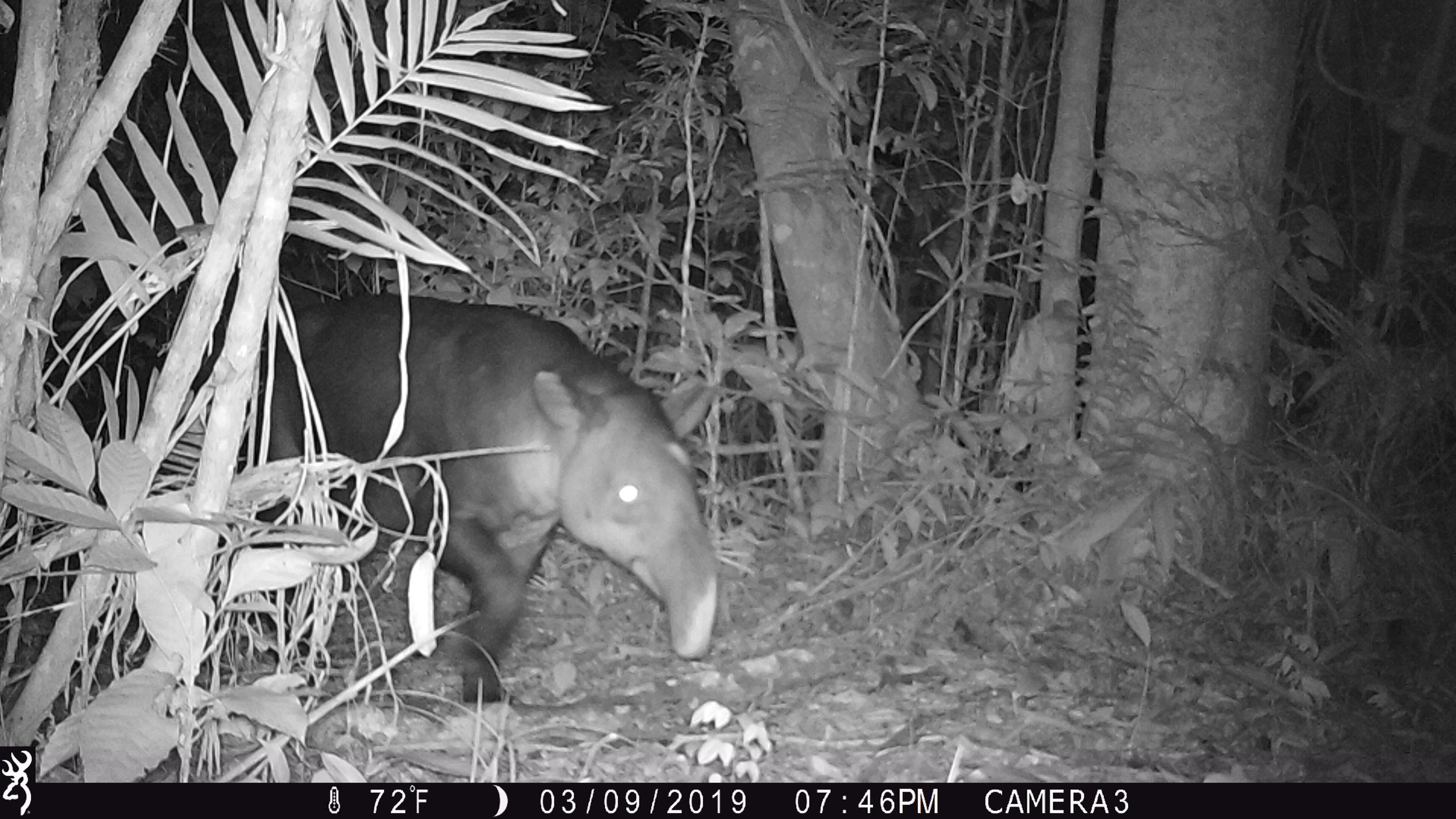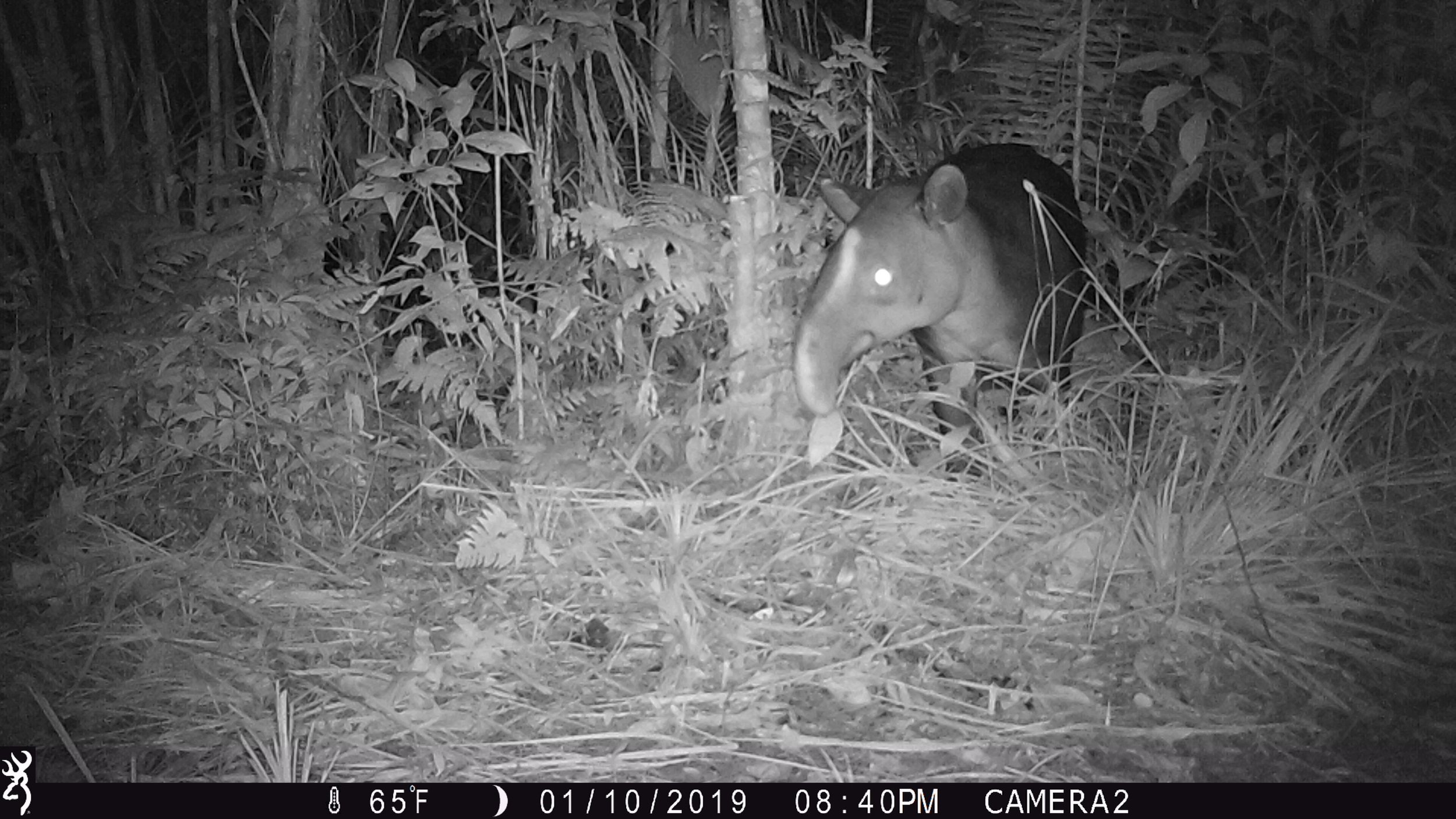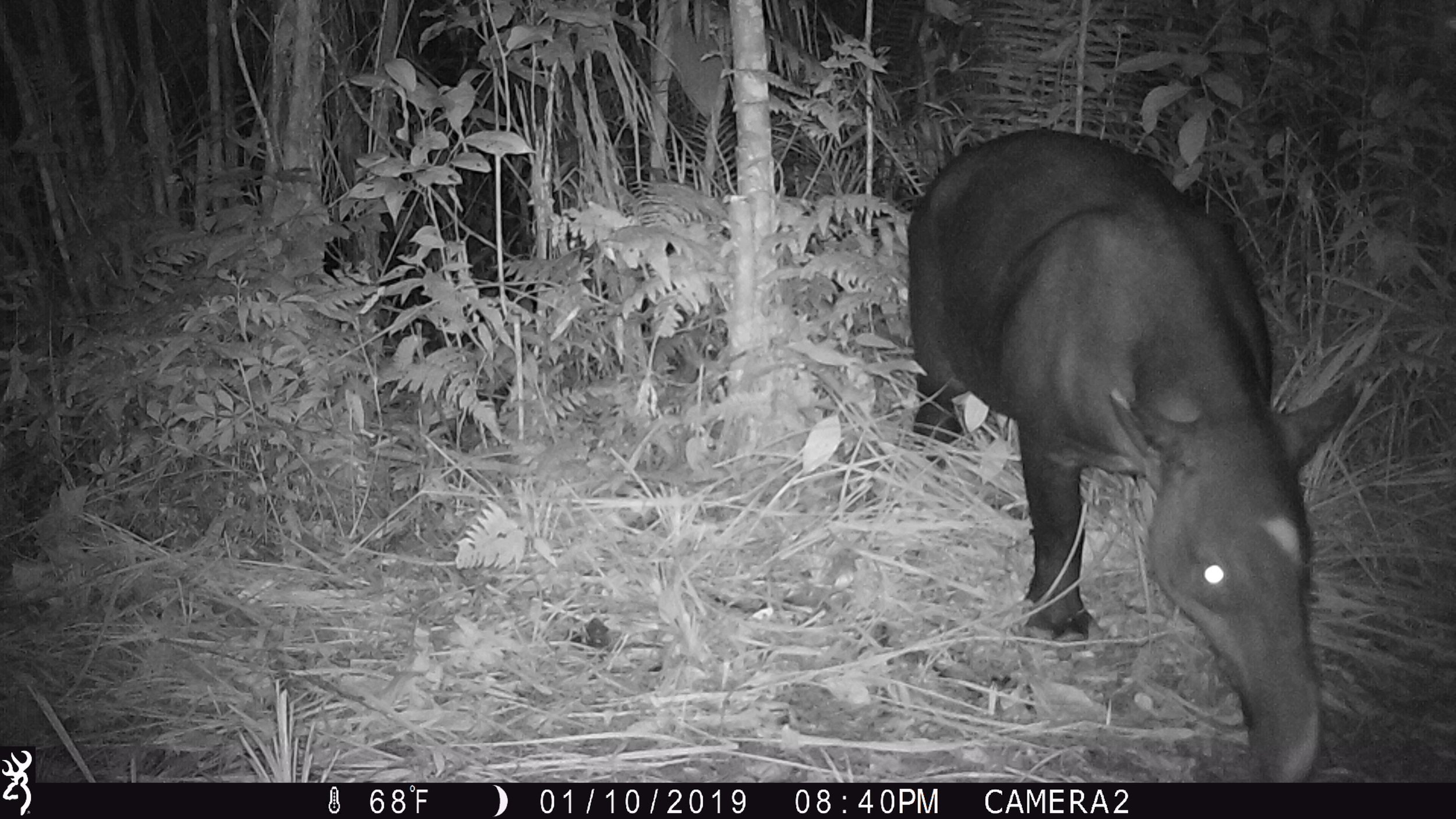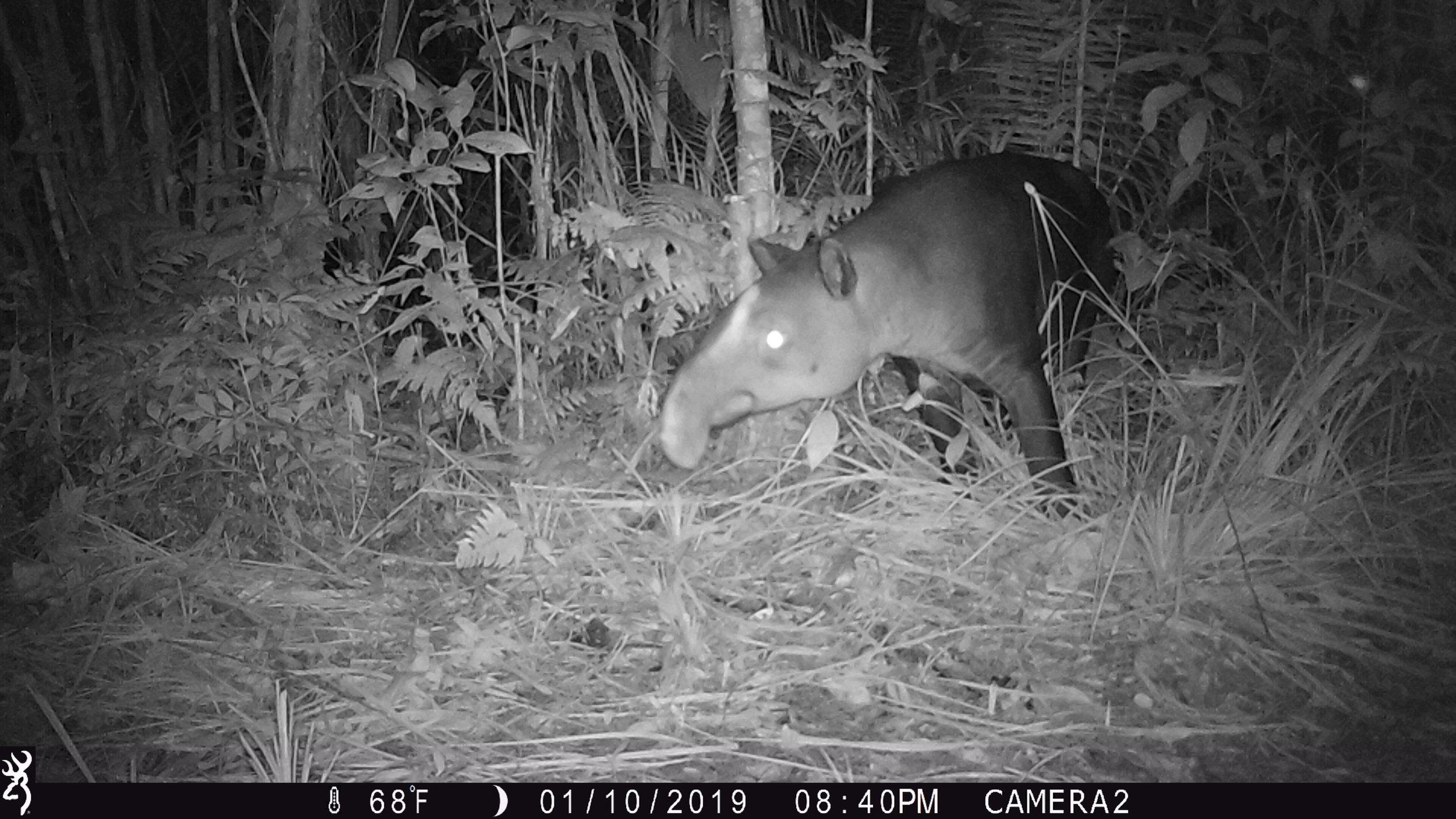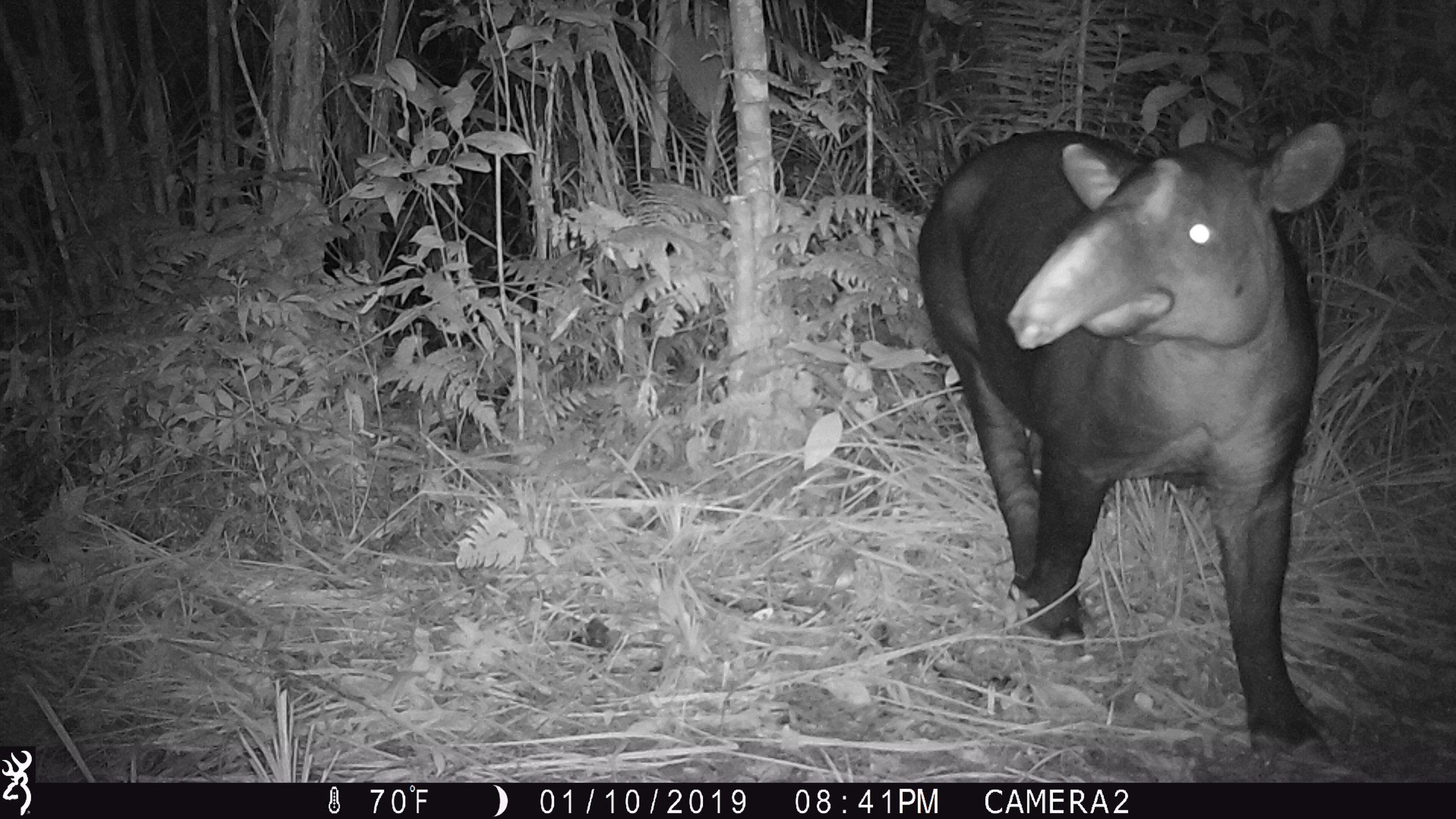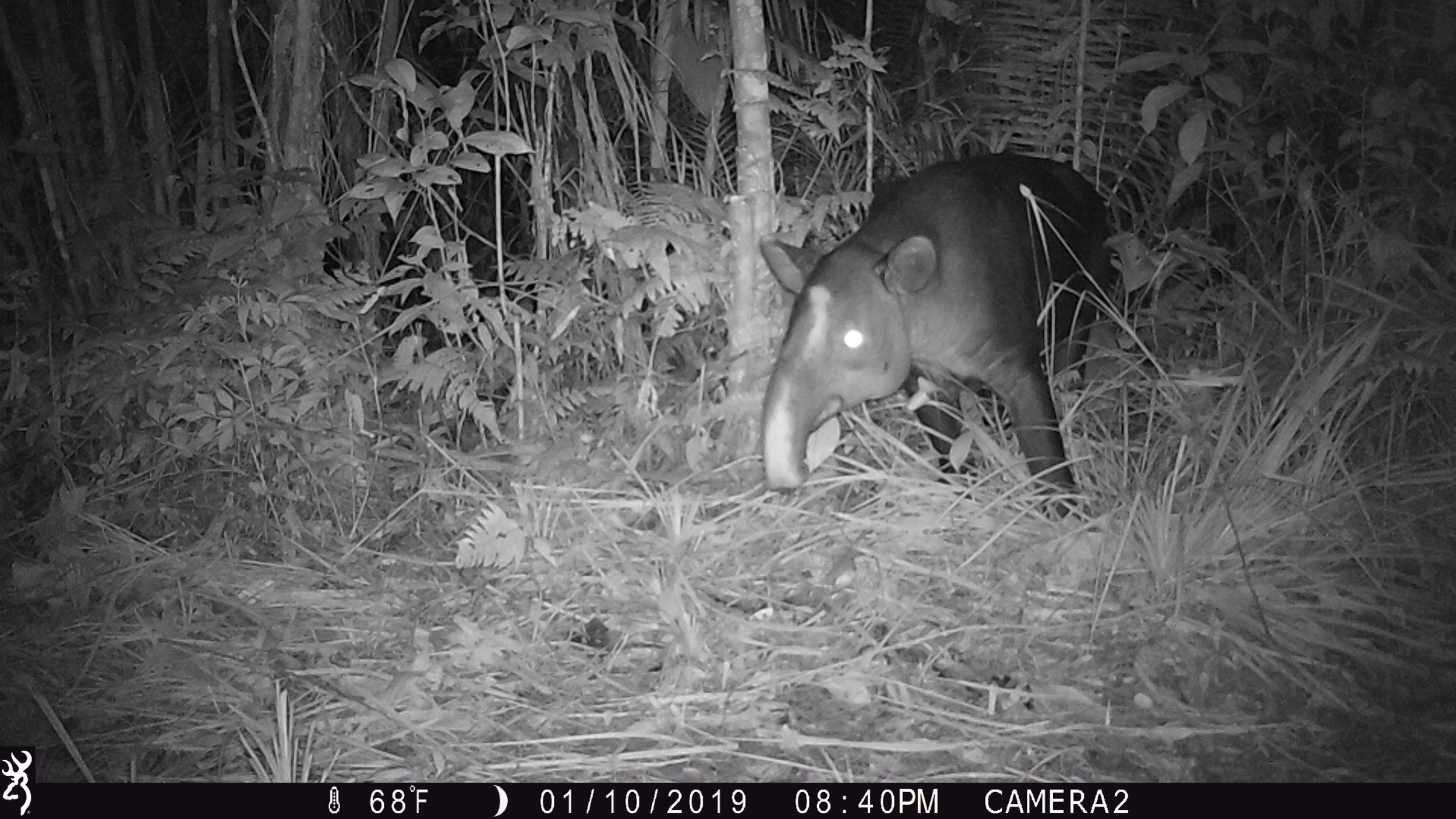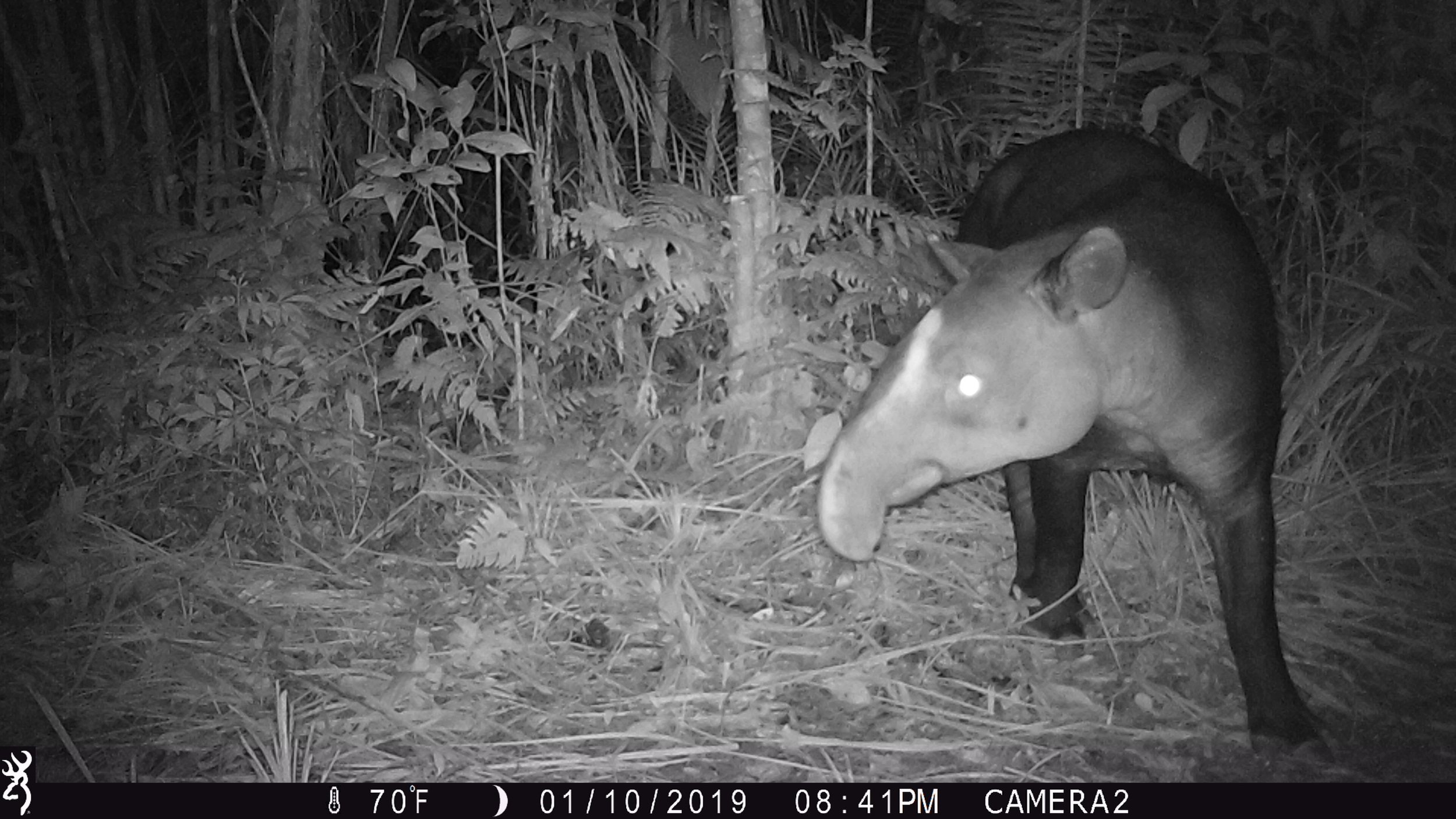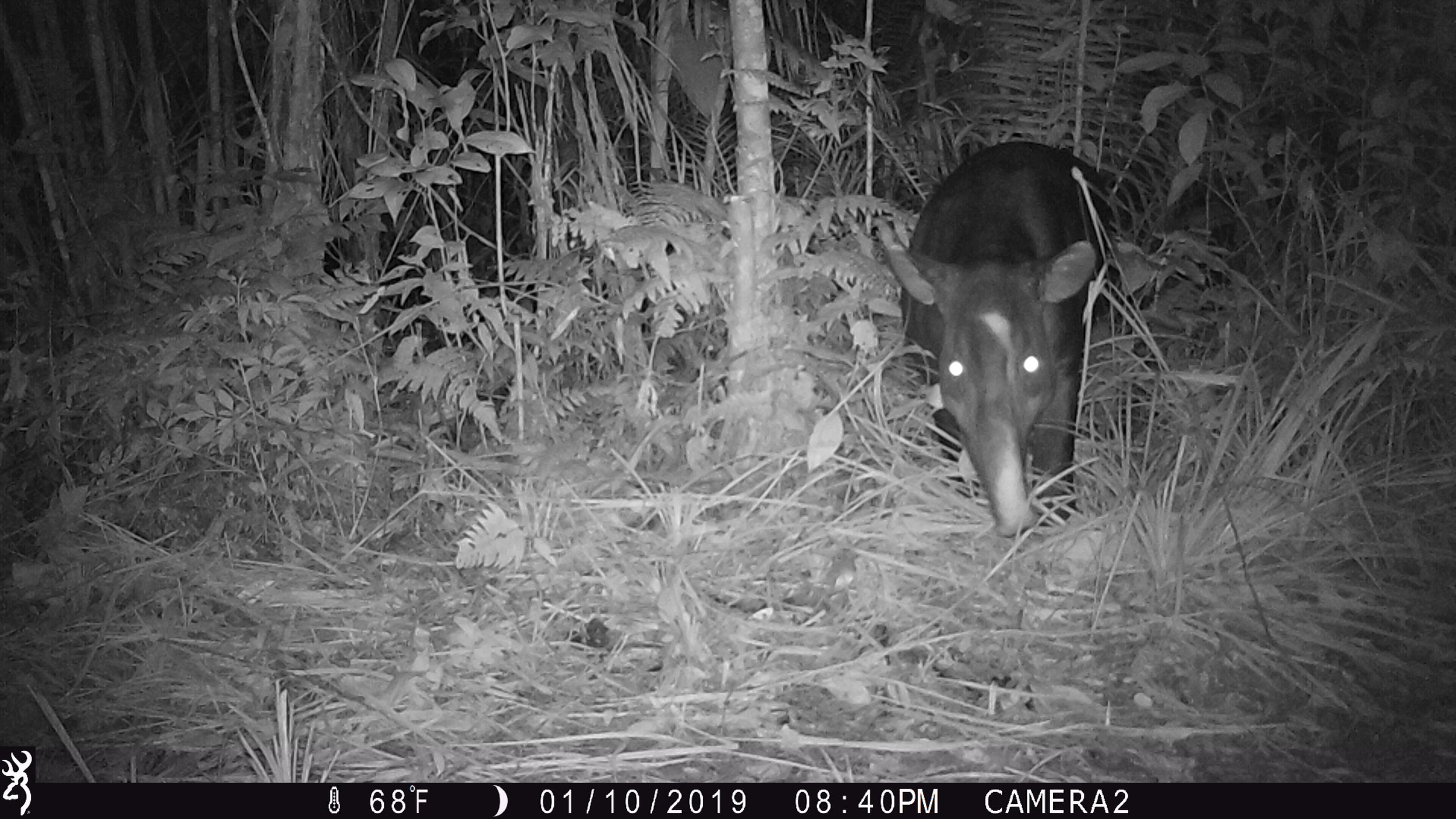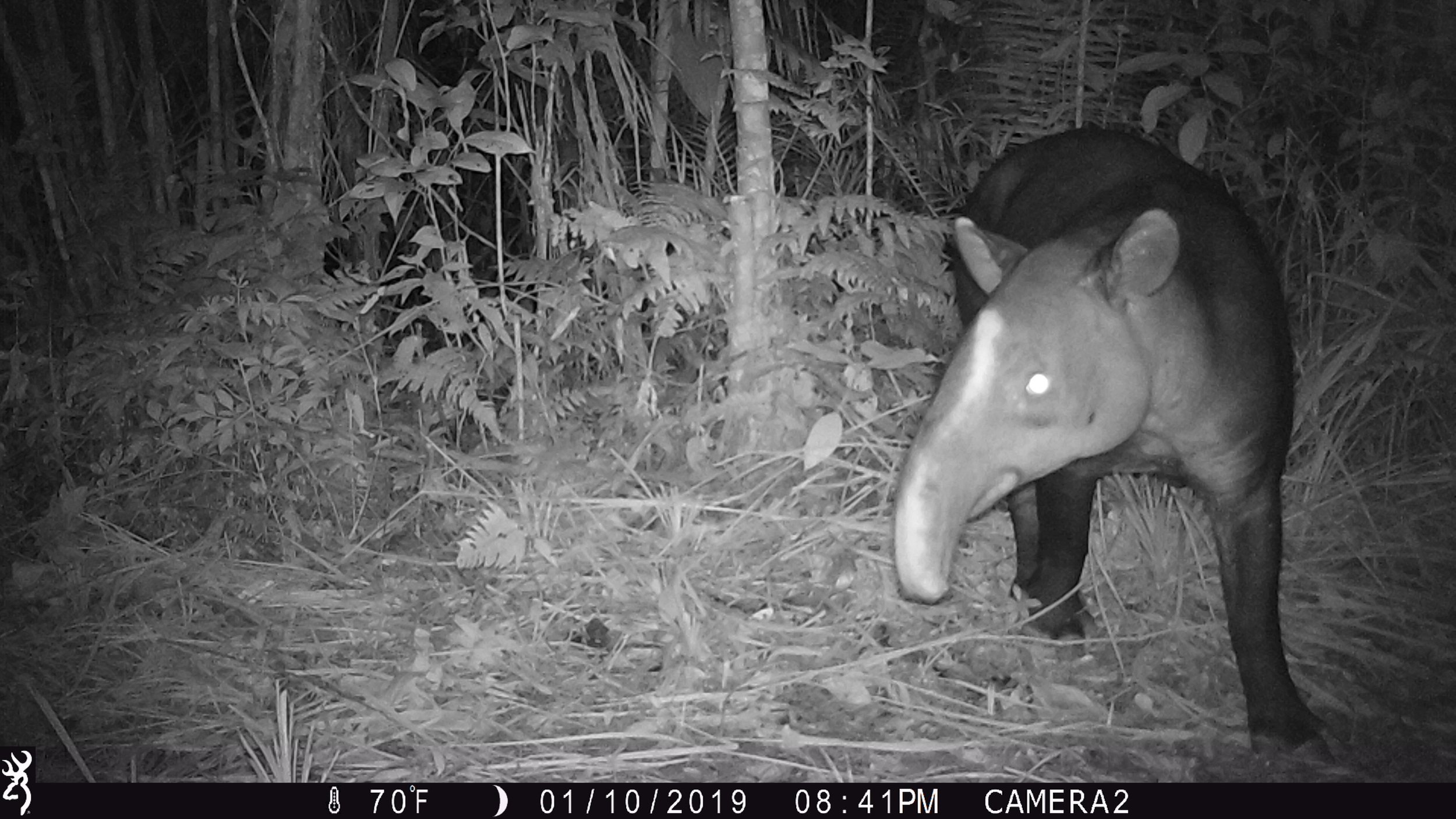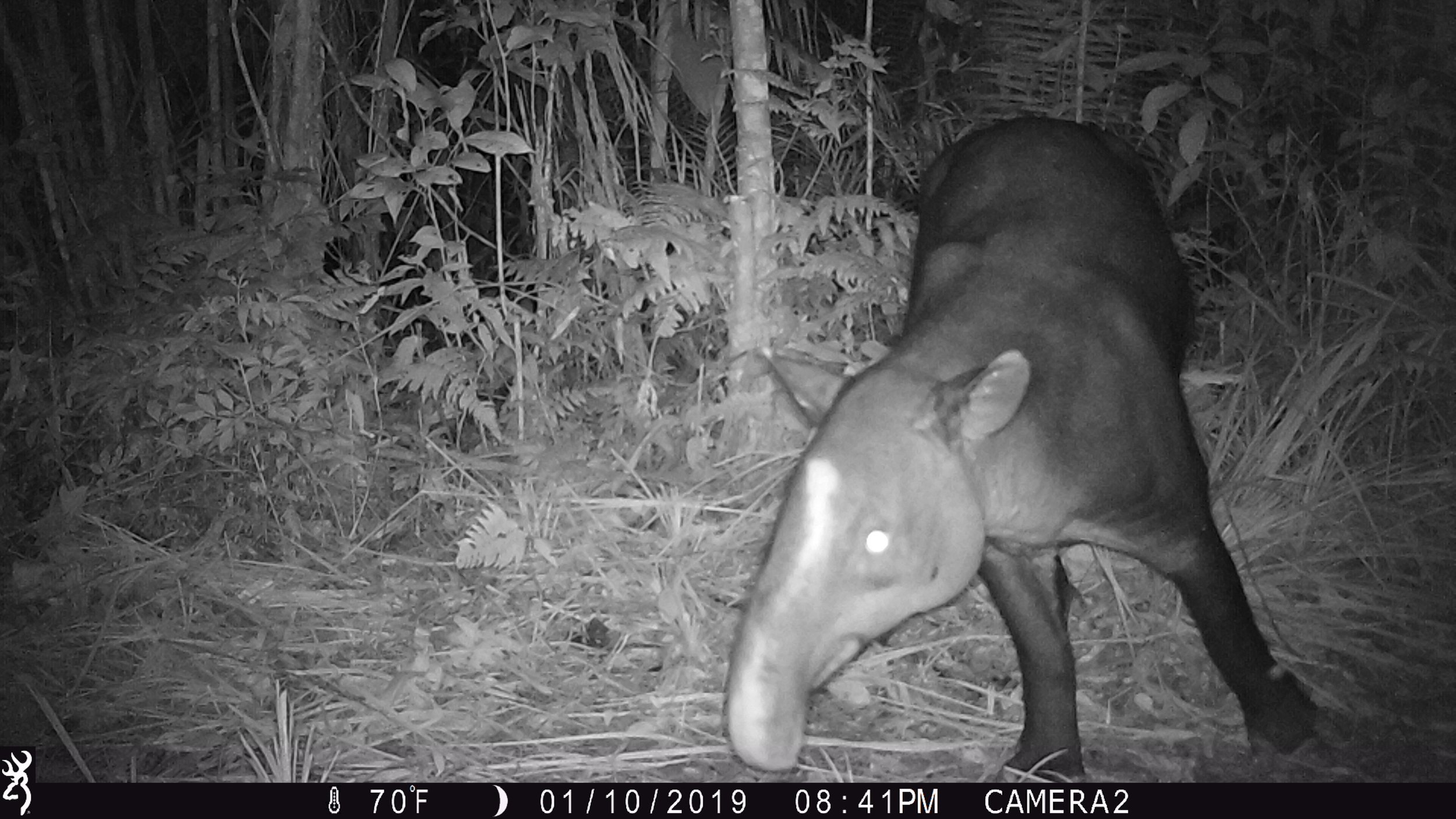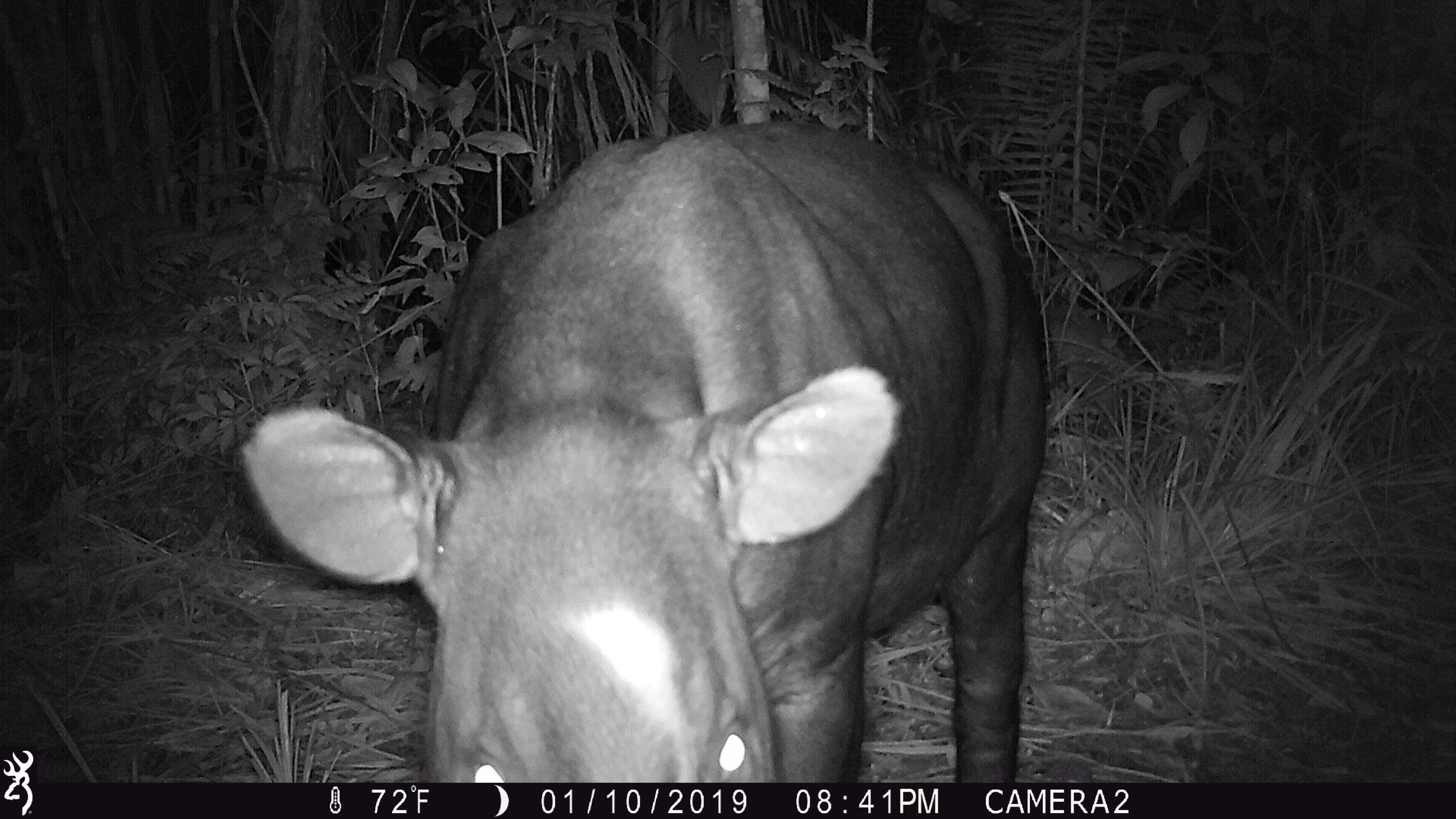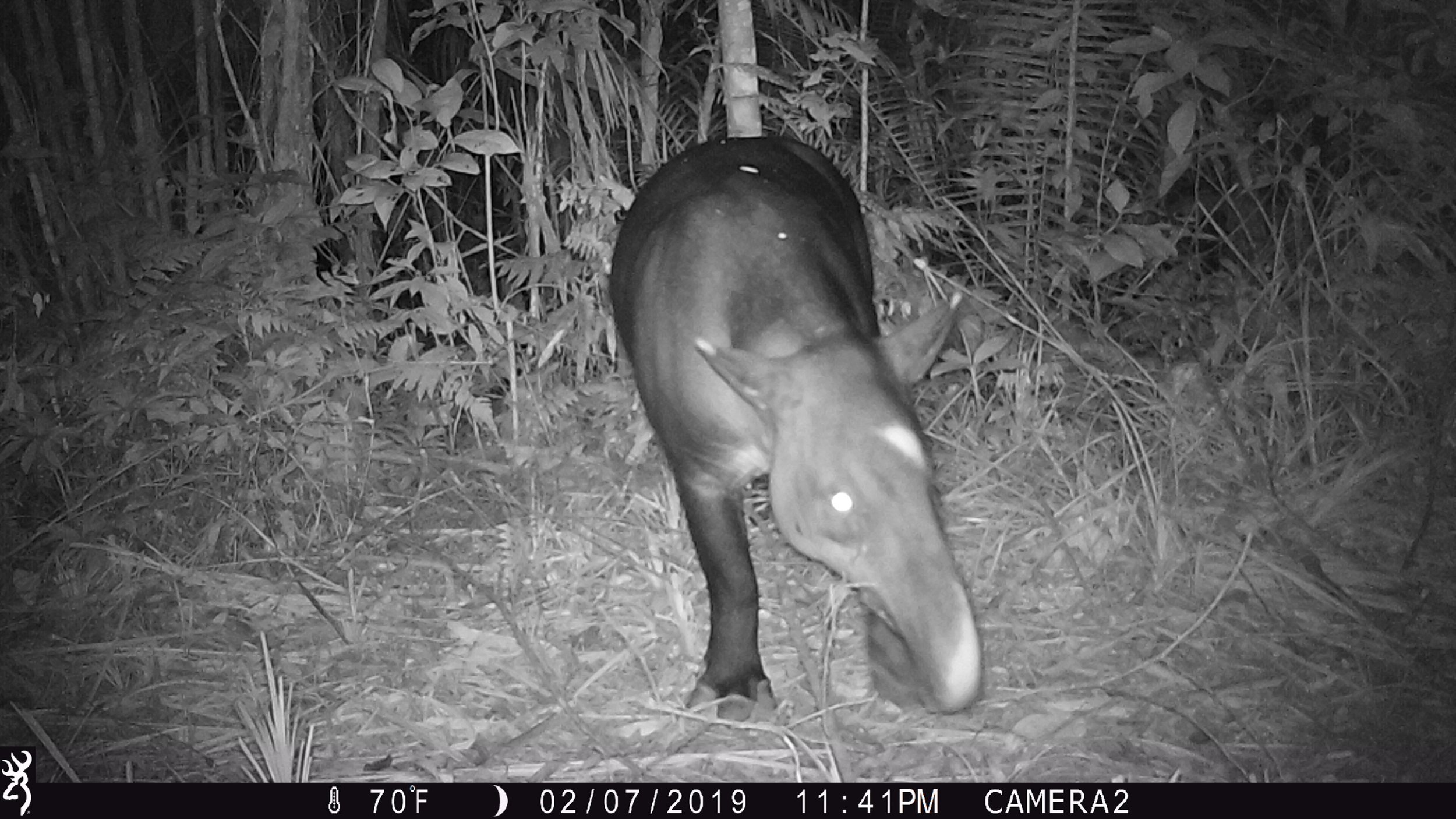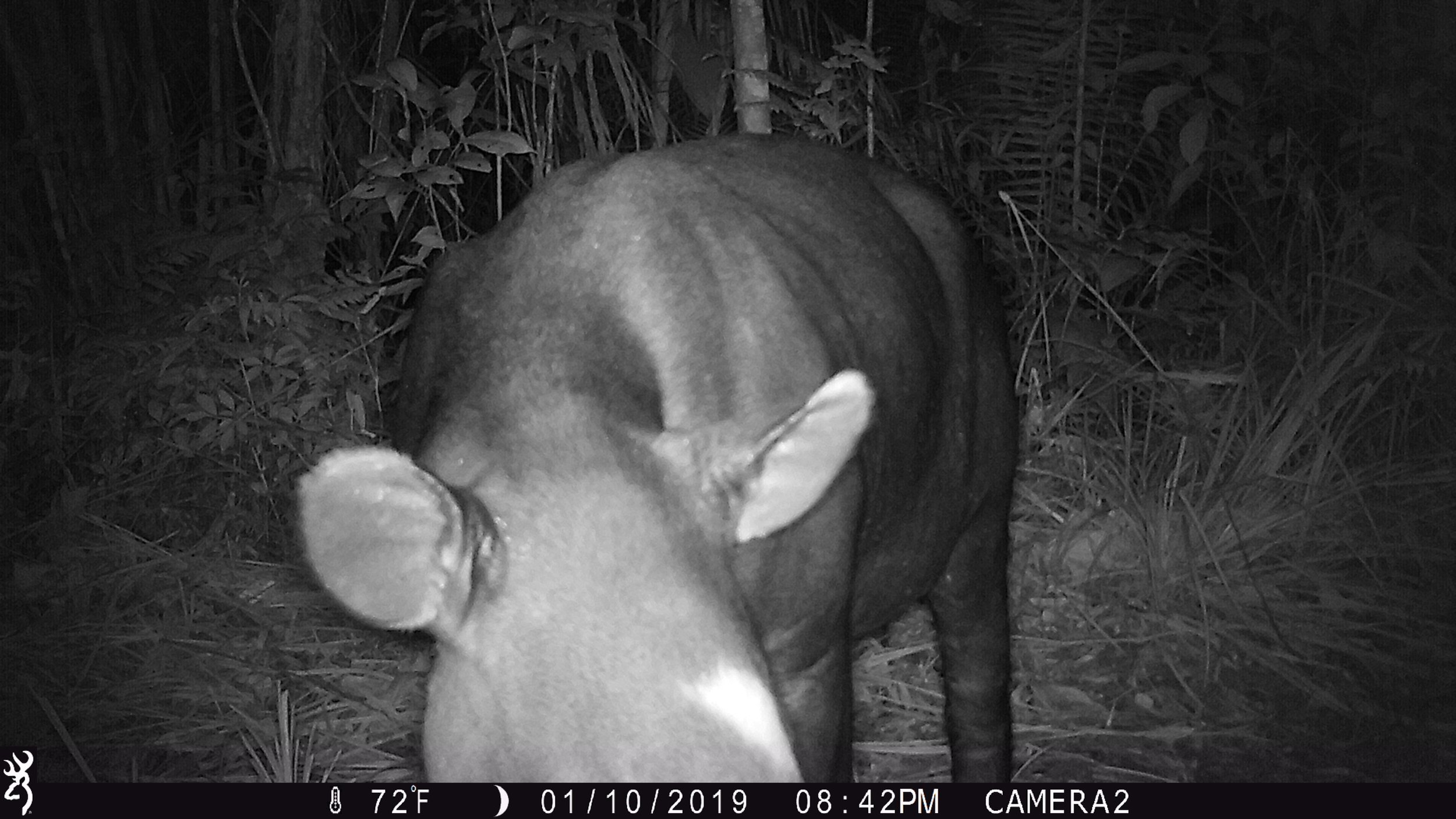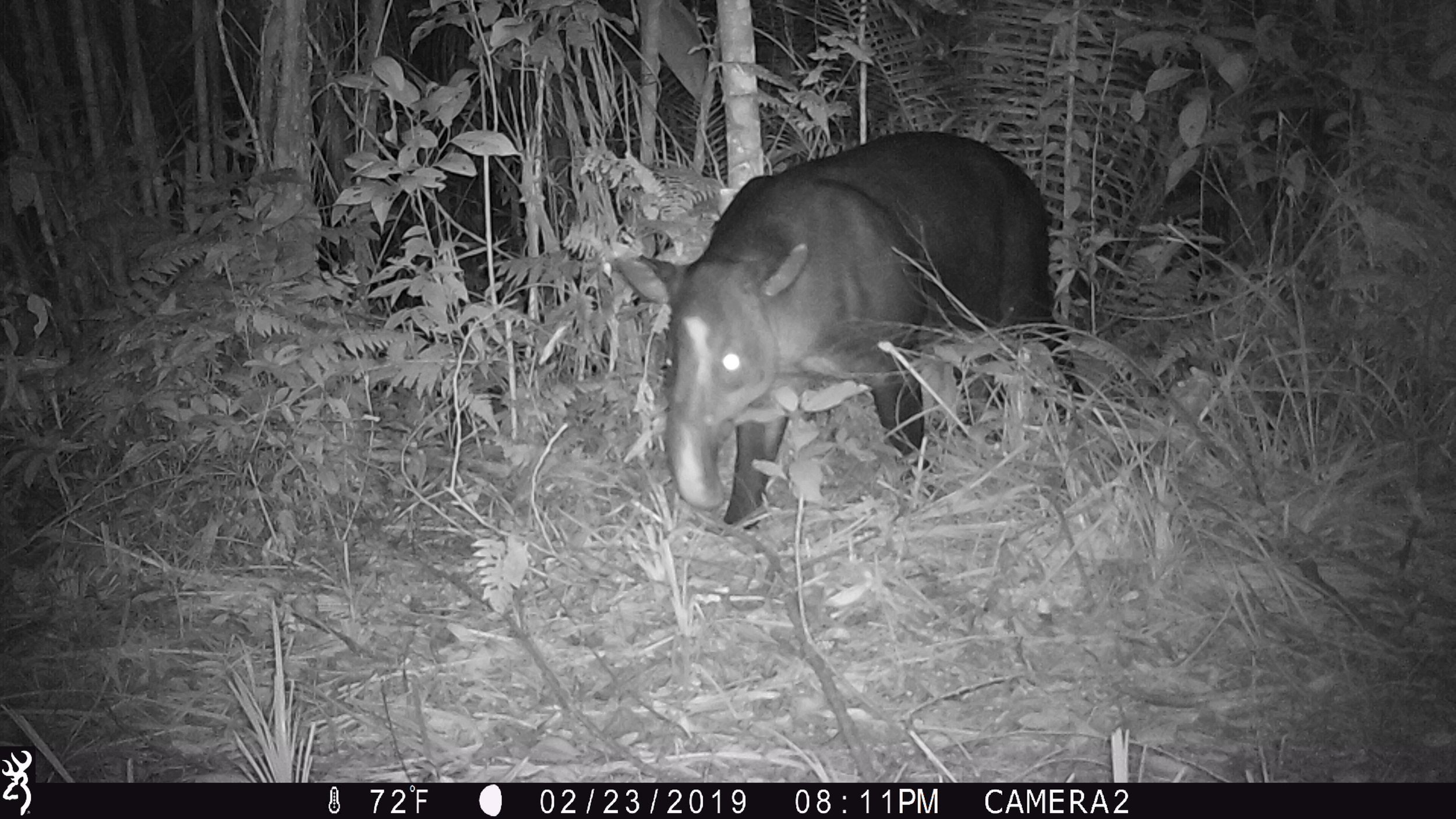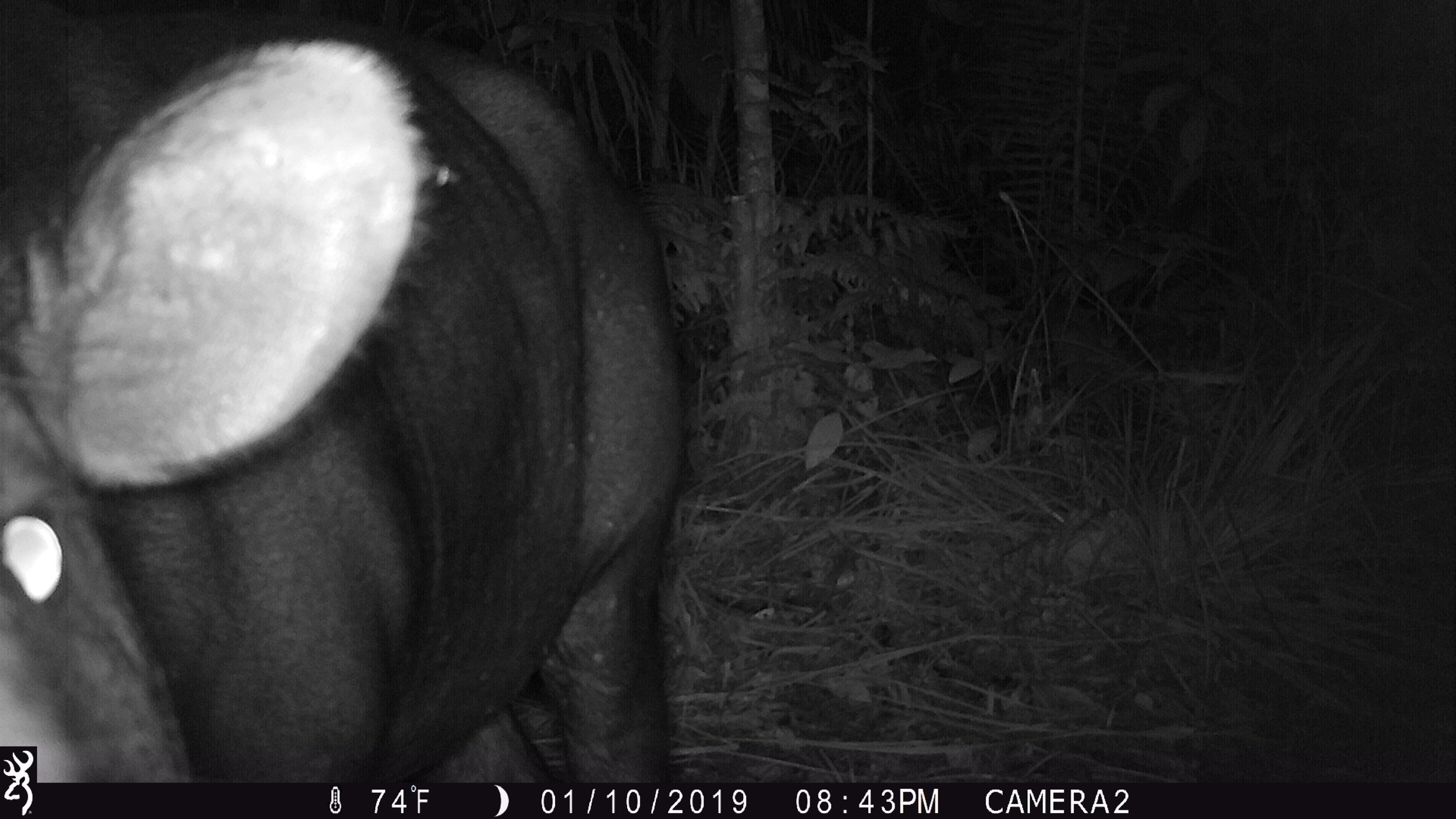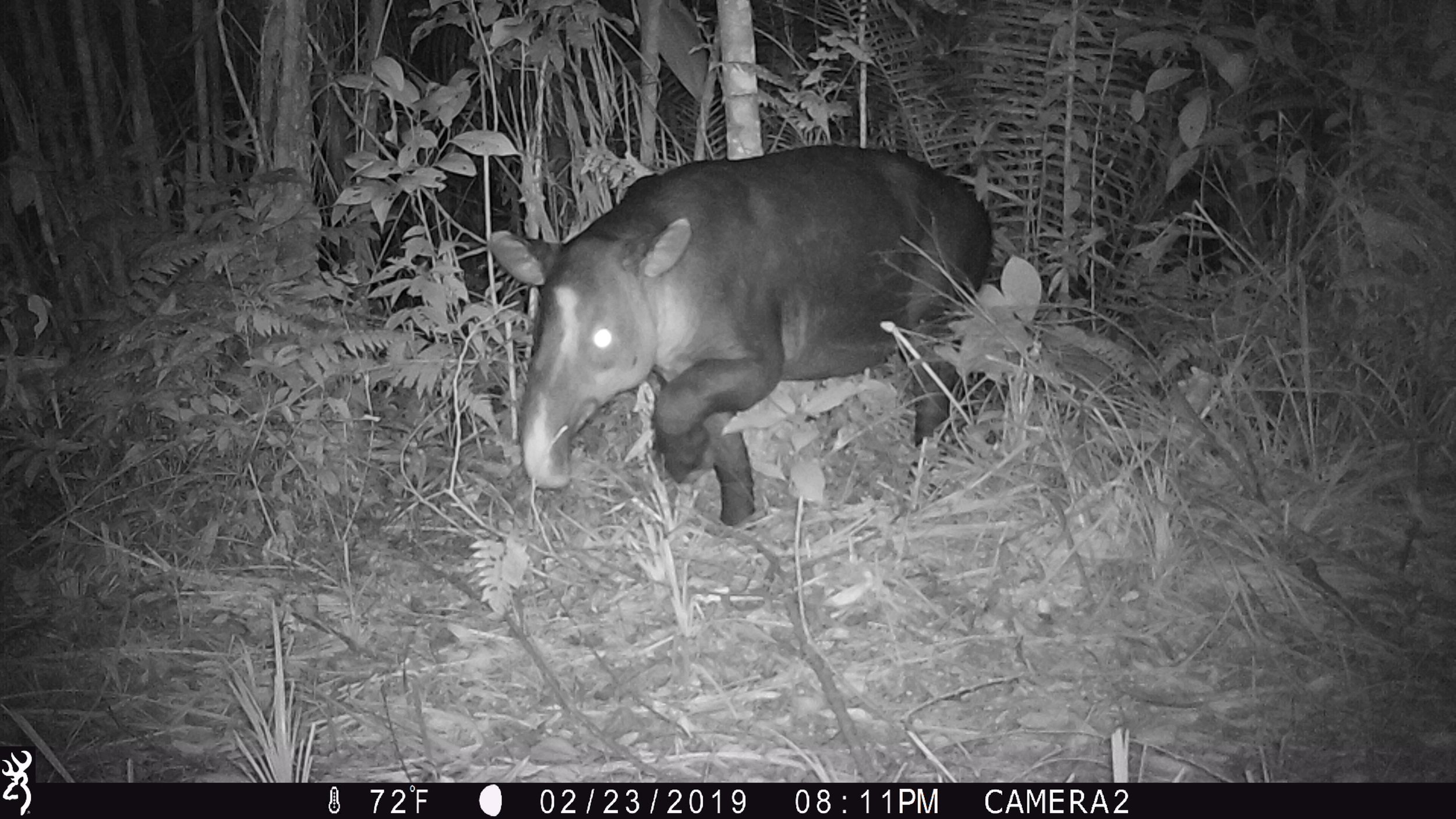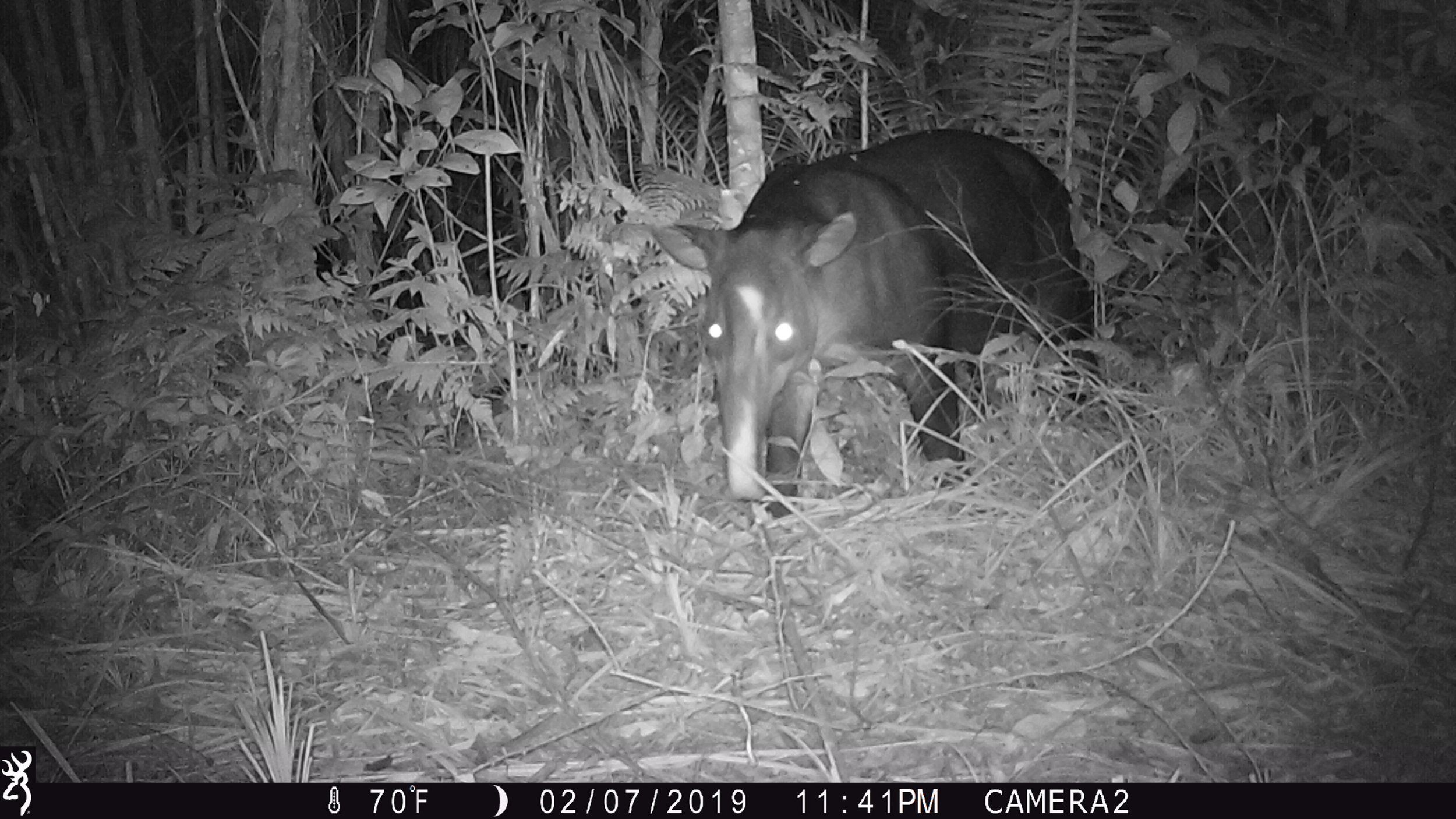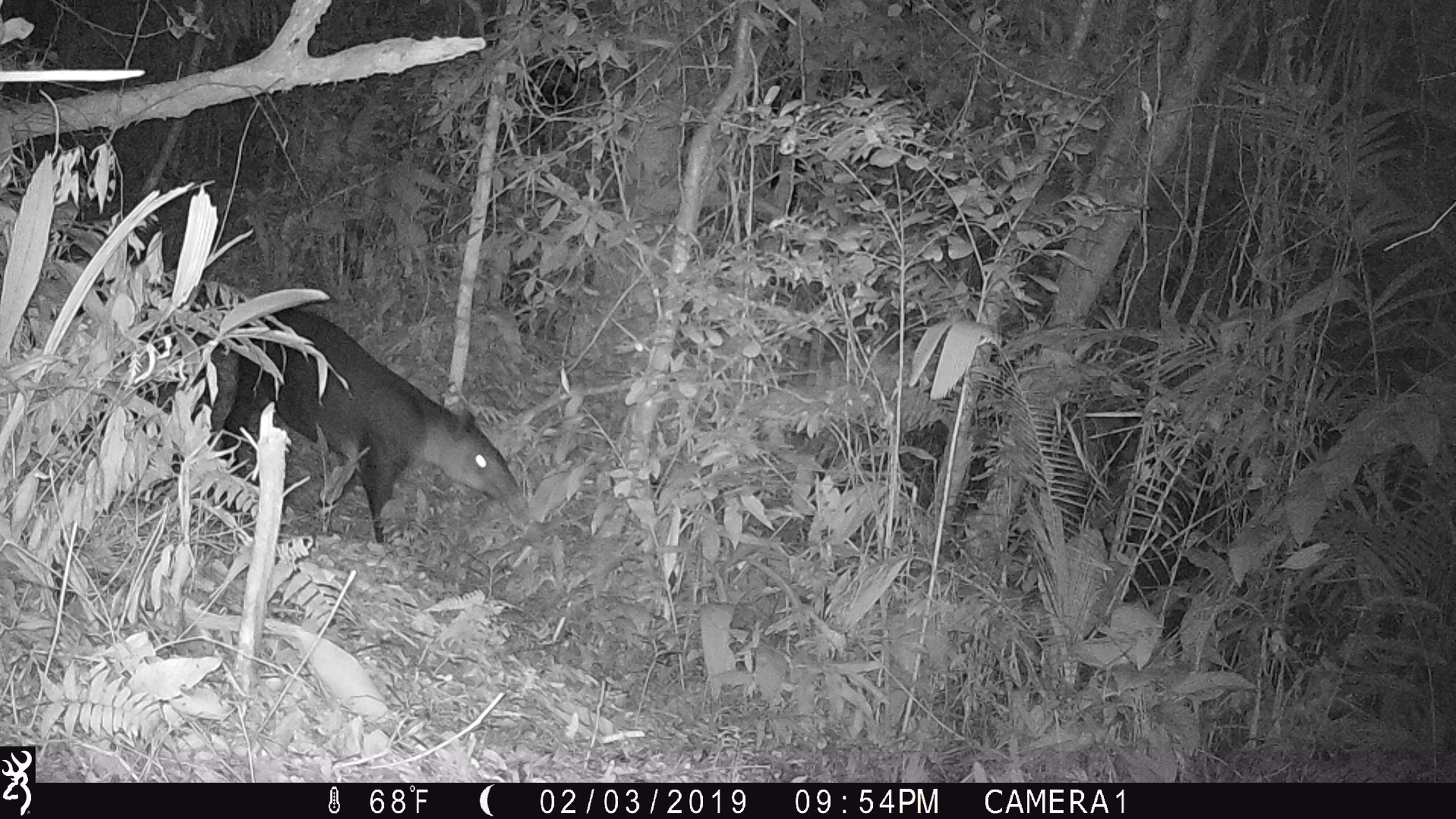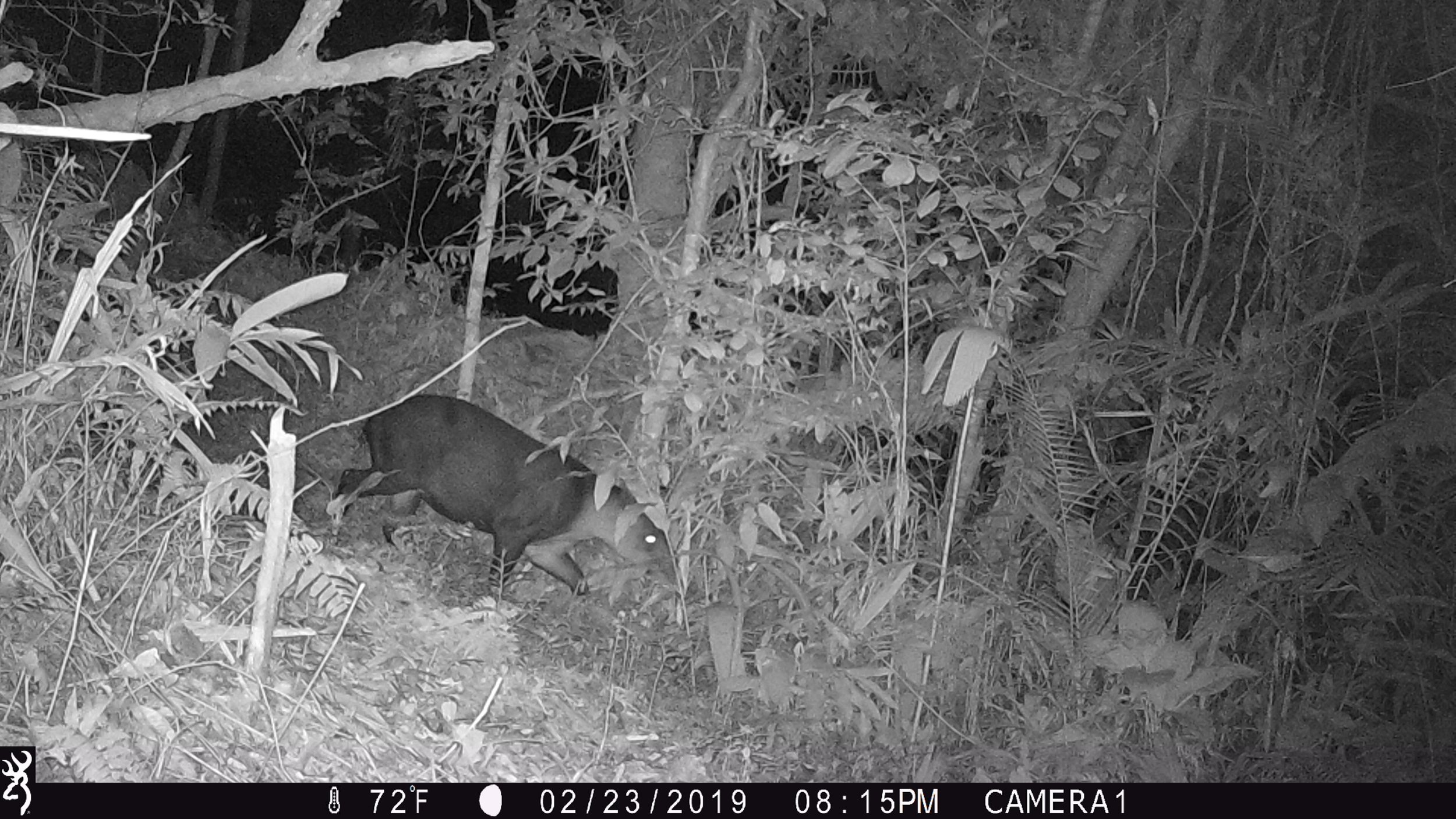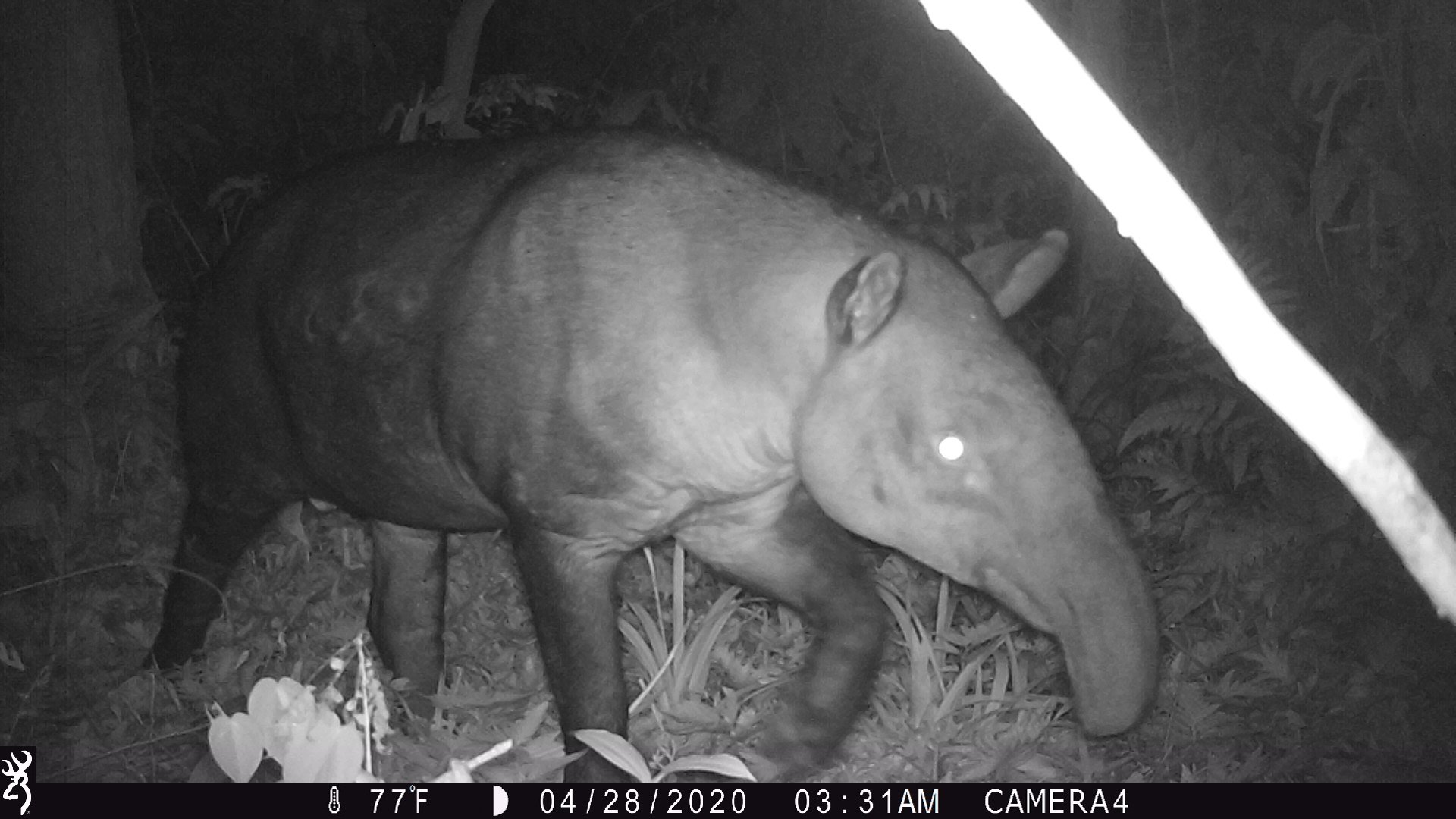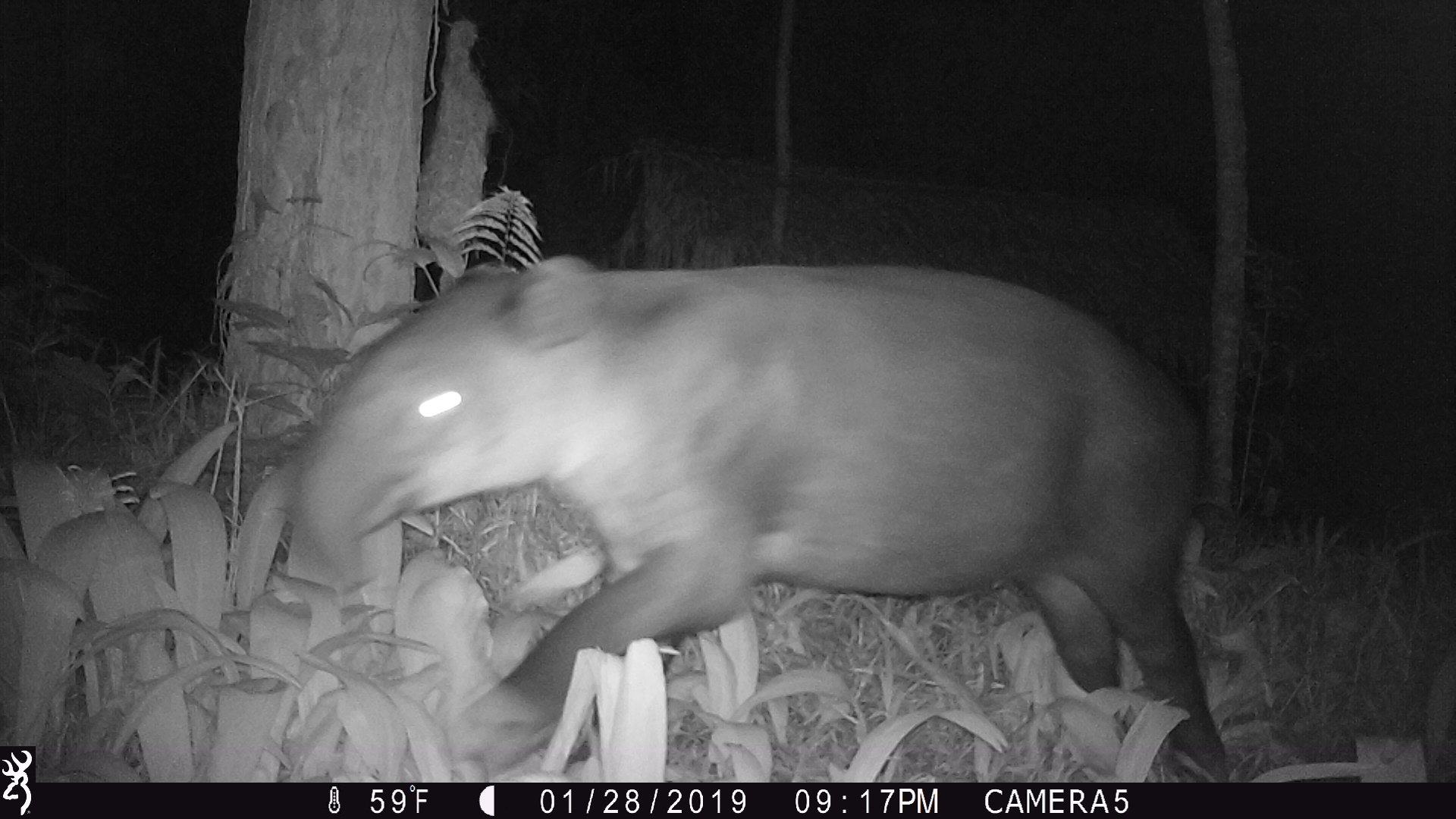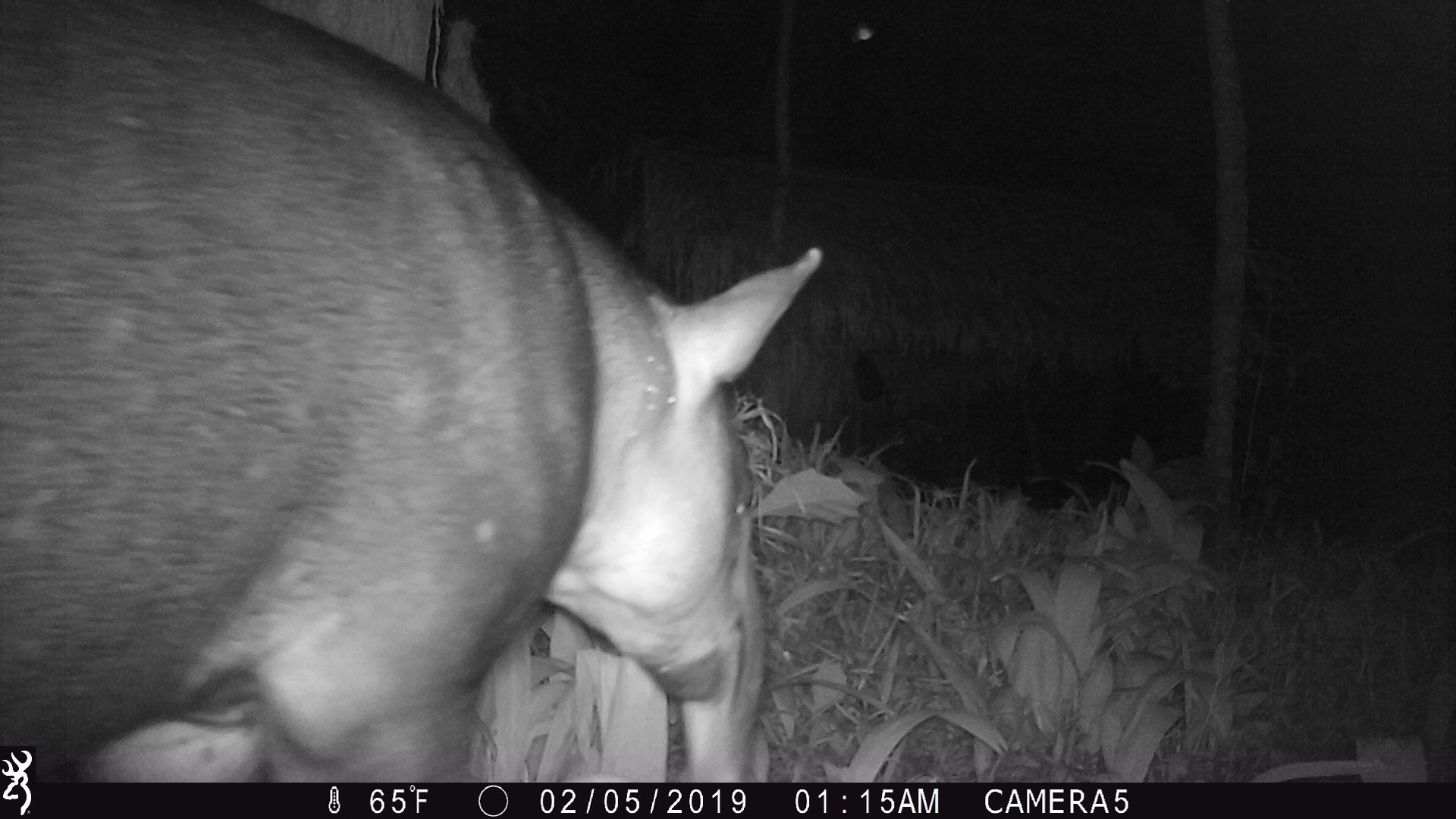Trail Camera Spotlight: Central American Tapir
THE CENTRAL AMERICAN TAPIR
The Central American tapir (Tapirus bairdii), also known as Baird’s tapir, is one of the most interesting and enigmatic animals of the Neotropics. These tapirs are found in tropical forests from southern Mexico to Panama, and are the largest mammals native to the Central American rainforest, weighing up to 650 pounds (295 kg).
A tapir at the Belize Zoo. Image by Inspire EdVentures.
Despite their size, however, tapirs are gentle giants. These herbivores (plant-eaters) eat mostly fruit and leaves, and are known for their shyness, not aggression. In fact, tapirs are one of the most elusive animals of the Belizean rainforest. Many Belizean residents and visitors alike see their first tapir at the Belize Zoo and Tropical Education Center, where animal ambassadors such as Sparks, Indy, and Navidad help teach zoo visitors about the importance of and threats to their amazing species.
Indy the tapir, an animal ambassador at the Belize Zoo. Image by Inspire EdVentures.
Click here to learn more about the biology of Central American tapirs!
TRAIL CAMERAS & TAPIRS
The Inspire EdVentures Trail Camera Project began in 2017, when we placed several trail cameras on the rainforest edge near Sleeping Giant Lodge. The project has since expanded to add multiple cameras and locations, including at the Aracari Resort, and has recorded thousands of images over more than five years of monitoring. During that time, Inspire EdVentures has captured hundreds of images of the Central American tapir, offering glimpses into the lives of these mysterious mammals.
Tapirs are primarily nocturnal, meaning that they are most active at night, when rainforest temperatures are cooler. Accordingly, most of our trail camera images take place after dark or in the early morning, though in rare cases we see tapirs passing through in daytime.
Adult tapirs are typically dark gray in color, with lighter undersides, small dark eyes, and white-tipped ears.
Like other nocturnal mammals- ranging from herbivores such as deer to big cats such as jaguars- tapirs have adaptations suiting them to low-light conditions. One such adaptation is the tapetum lucidum, or eyeshine, often seen in our nighttime photos. The tapetum lucidum is a membrane found in the eyes of many nocturnal vertebrates that reflects light like a mirror, helping to improve the animal’s eyesight at night. In nighttime images taken by our trail cameras, this can cause a tapir’s eyes to appear as glowing white discs.
Our trail cameras also offer insight into the tapir’s habitat. Central American tapirs are known to be found near fresh water, and are very good swimmers. Inspire EdVentures cameras situated near a rainforest stream have seen tapirs easily wading through the water!
How often have we seen the same tapir? Unlike jaguars, who can be differentiated by their unique spot patterns, individual tapirs are difficult to tell apart. However, one visitor to our trail cameras is easily identifiable by a white marking- perhaps a birthmark or scar- on its forehead and nose. This tapir was seen repeatedly by one of our trail cameras over a period of several months in 2019.
The white-marked tapir, first spotted in January 2019.
The white-marked tapir, seen again by the same camera in late February 2019.
Tapirs are not the only rainforest residents spotted by our trail cameras. An adult tapir is so large as to have few natural predators; even a jaguar, the fiercest hunter of the Central and South American rainforests, will prefer smaller, more easily captured prey to tangling with a tapir. However, jaguars and tapirs may be found in the same places. In December 2022, one of our trail cameras spotted a jaguar and tapir passing through the same area, less than 48 hours apart!
Learn more about Central American tapir conservation, and keep an eye out for updates to this article as the Inspire EdVentures Trail Camera Project continues to monitor tapirs in the wild!
Check out more of our trail camera photos of Central American tapirs below:
Help Support Tapir Conservation!
A tapir crossing sign in Belize. Photo by Andy Coleman, Urban Turtle Project.
Free Shipping for World Tapir Day now through May 3rd! Use Discount Code FREETAPIRSHIPPING at Checkout!
Tapirs are the national animal of Belize, and one of our favorite stops on our virtual or in-person tours. Our friends at the Belize Zoo and Belize Tapir Project are at the center for tapir conservation and education in Central America. The sale of these decals will go towards helping their mission of habitat conservation and education!
This decal is based on one of the most iconic signs in Belize - the Tapir Crossing. The Maya Forest Corridor, a major conduit for wildlife, transect Belize, and these signs help protect tapirs, and other wildlife, along the roadways.
See the video below for more on these lovable animals!
All our decals are water-resistant, but should not be exposed to the high heat and humidity of dishwashers.








